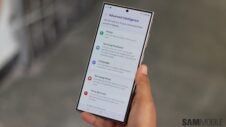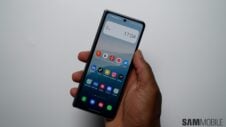An independent teardown of the Galaxy Z Fold 4 suggests that the foldable phone's bill of materials comes in at around $670. In terms of profit margin, the Galaxy Z Fold 4 falls between the iPhone 14 Pro Max and another foldable phone developed by a Chinese OEM. Namely Huawei.
The estimated cost of the Galaxy Z Fold 4 components is around 38% of the sales price. In contrast, the part cost to retail price ratio for the Huawei Mate Xs is roughly 30%, meaning that Huawei has a higher profit margin on its foldable phone than Samsung. In other words, it pays less for parts relative to its foldable phone's launch price.
Meanwhile, the Xiaomi Mi Mix Fold part-cost-to-retail-price ratio is about 40%. And on the non-foldable side, rival Apple spends a little over $500 on iPhone 14 Pro Max parts, with a cost-to-market price ratio of around 46%. These estimated part costs are based on a teardown conducted by Nikkei in partnership with Tokyo teardown specialist Fomalhaut Techno Solutions.
On a cost basis, roughly 50% of Z Fold 4 parts are produced locally
The recent Galaxy Z Fold 4 teardown also revealed that roughly half the parts used by the Samsung foldable phone are produced in South Korea — that is, on a cost basis. Similarly, on a cost basis, roughly 50% of the parts used by Huawei are made in South Korea. And around 36% of the parts used by the Xiaomi Mi Mix are supplied by manufacturers in the same country.
It's important to note that the bill of materials for all these OEMs, including Samsung, Apple, Huawei, and Xiaomi, doesn't include the cost of development and engineering, R&D, marketing, employee wages, and so on. It's a rough estimate of the cost of parts in a vacuum.
In any case, the teardown puts Samsung's part cost ratio into perspective, considering that Huawei has a considerably higher profit margin, despite that most of its phones are sold locally in China rather than overseas. Xiaomi is on a similar level to Samsung, and Apple has the smallest profit margin on the iPhone 14 Pro Max, albeit, the latter is not a foldable phone.







